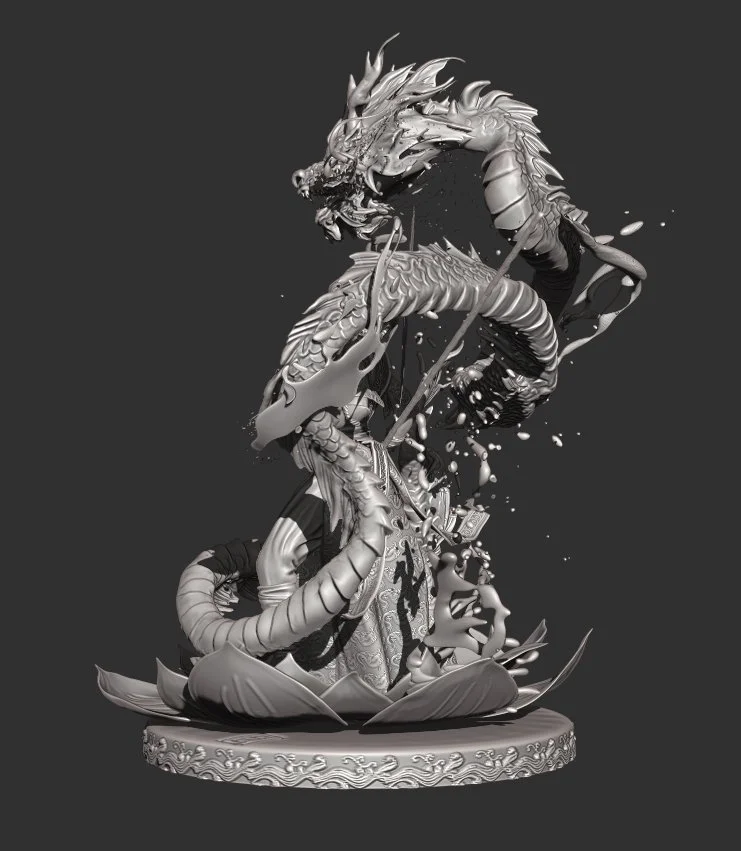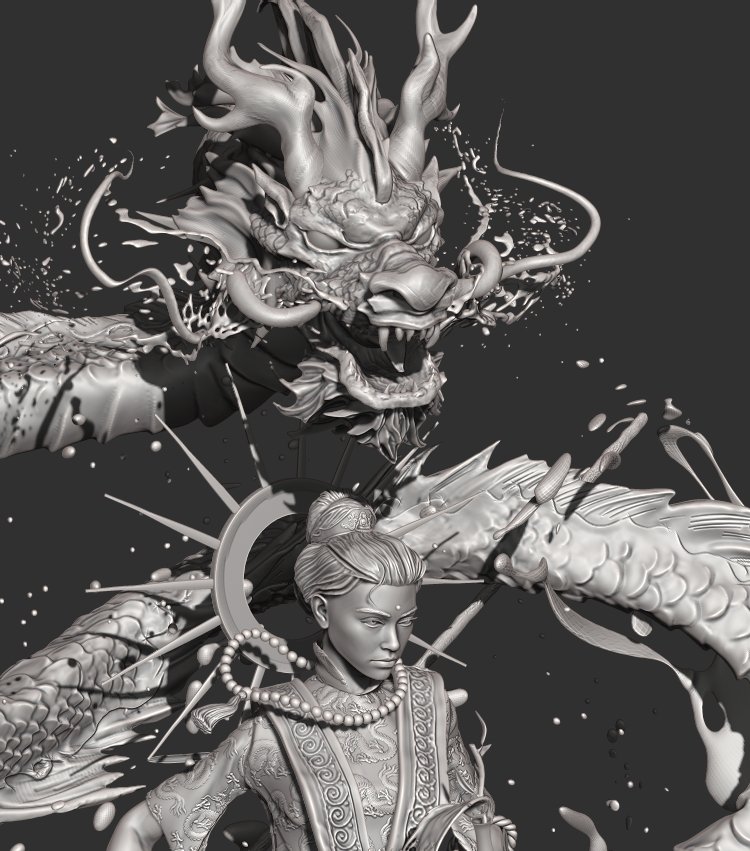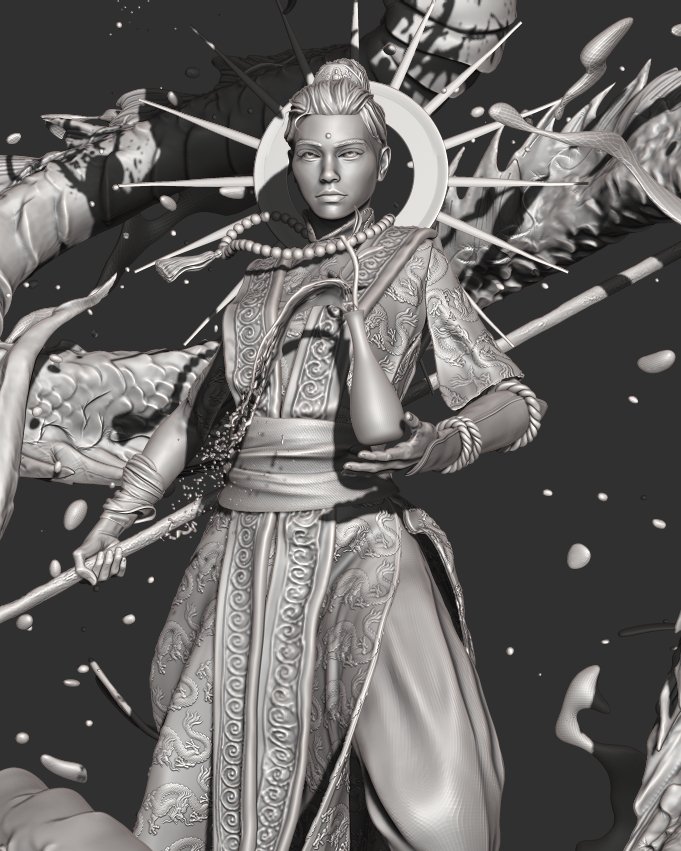Sam T. Lam. "Quan Âm / Quanyin” (2023). ZBrush, Marmoset Toolbag.
“Om Mani Padme Hung”
Render in Marmoset Toolbag: main view.
Render in Marmoset Toolbag: close-up of dragon and Quan Âm's face.
Render in Marmoset Toolbag: close-up of clothing and lotus.
Render in Marmoset Toolbag: close-up of Quan Âm's face and clothing.
ZBrush render: main view.
ZBrush render: left-facing side view.
ZBrush render: right-facing side view.
ZBrush render: close-up of crown with Amitabha / A Di Đà Phật, teacher of Quan Âm and head of her buddha family (the Padma/Lotus family).
ZBrush render: close-up of dragon and Quan Âm's face.
ZBrush render: close-up of body and clothing.
My digital sculpture of one of the most important devotional figures in my life and one of the most popular figures from Buddhism, known in Vietnamese as Quan Âm, Guānyīn in Chinese, and Avalokiteśvara in the original Sanskrit. She is the bodhisattva, goddess, and personification of compassion. Her full name means literally “the one who perceives the sounds of the world,” i.e., she who hears the cries of suffering beings.
She is commonly depicted with a dragon, symbolizing her command over instinctual nature and primal forces, as well as her patronage over fishermen. She stands on a lotus, the perennial symbol of enlightenment which emerges from the “mud” of existential suffering. In her left hand she carries a vase with holy water and a willow branch, both used for anointing aspirants at the start of esoteric rituals. I’ve placed in her right hand a spear, one of the weapons of the dharma protectors. On Quan Âm’s crown is Amitabha / A Di Đà Phật, her teacher and lineage head.
—
This project served as a meditation for me on the meaning of compassion. The tendency among us to sanitize compassion as merely affectionate, abstract sentiment (“thoughts and prayers”) seems to me a non-starter. What does it mean to be compassionate in the face of so much suffering and not be upset—or at least, without a fierce desire to act? How do we engage with the deeper meaning of the word compassion, which means literally “to suffer with”?
A well-known story about Quan Âm says that, upon hearing the cries of the suffering, she exploded—distraught—into fragments. Those fragments took on new forms to continue the work of liberation, and thus it is said that Quan Âm appears in the specific form that each being needs to lead them out of suffering. Among those forms are the variations of Mahakala, the wrathful protector with a monstrous face, wielding weapons in many arms, and blood dripping from his fangs. In my brief for this project, I wrote that Quan Âm is “pre-Mahakala”—that is, she who bears witness to suffering in the world, and engages.
—
Quan Âm’s mantra is OM MANI PADME HUNG or, in Vietnamese, Án ma ni bát di hồng.











